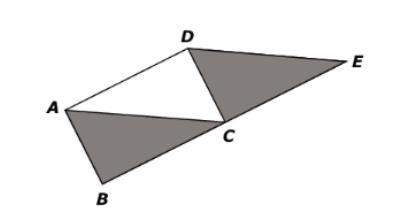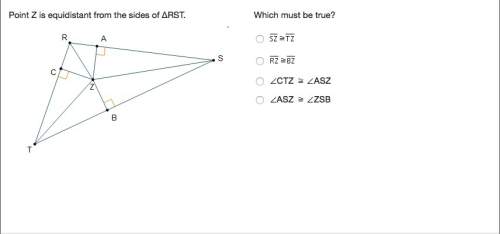
Mathematics, 04.10.2020 02:01 kingrebl4267
Which of the following expressions demonstrates the distributive property? 3 + 4 + 5 = 4 + 3 + 5 -2(5 + 7) = -2(7 + 5) 3(-8 + 1) = 3(-8) + 3(1) 6[(7)(-2)] = [(6)(7)](-2)

Answers: 3
Another question on Mathematics

Mathematics, 21.06.2019 22:20
Question 9 of 10 2 points suppose your sat score is 1770. you look up the average sat scores for students admitted to your preferred colleges and find the list of scores below. based on your sat score of 1770, which average score below represents the college that would be your best option? o a. 1790 o b. 2130 o c. 2210 od. 1350
Answers: 3

Mathematics, 22.06.2019 01:30
Novak gives 9 packs of paper to a group of 5 students. if the group shares the paper equally how many packs of paper does each student get. write the a answer as a mixed number
Answers: 1

Mathematics, 22.06.2019 01:50
Grandpa ernie is shrinking! over the past 4 years his height decreased by a total of 2.4 cm.it decreased by the same amount each year. what was the change in grandpa ernie's height each year
Answers: 2

Mathematics, 22.06.2019 03:00
In this problem, we explore the effect on the standard deviation of multiplying each data value in a data set by the same constant. consider the data set 14, 6, 8, 15, 15. (a) use the defining formula, the computation formula, or a calculator to compute s. (round your answer to one decimal place.) s = 4.28 (b) multiply each data value by 3 to obtain the new data set 42, 18, 24, 45, 45. compute s. (round your answer to one decimal place.) s = 12.83 (c) compare the results of parts (a) and (b). in general, how does the standard deviation change if each data value is multiplied by a constant c? multiplying each data value by the same constant c results in the standard deviation remaining the same. multiplying each data value by the same constant c results in the standard deviation being |c| times as large. multiplying each data value by the same constant c results in the standard deviation increasing by c units. multiplying each data value by the same constant c results in the standard deviation being |c| times smaller. (d) you recorded the weekly distances you bicycled in miles and computed the standard deviation to be s = 3.8 miles. your friend wants to know the standard deviation in kilometers. do you need to redo all the calculations? yes no given 1 mile ≠1.6 kilometers, what is the standard deviation in kilometers? (enter your answer to two decimal places.)
Answers: 1
You know the right answer?
Which of the following expressions demonstrates the distributive property? 3 + 4 + 5 = 4 + 3 + 5 -2(...
Questions


Mathematics, 01.08.2019 17:30

English, 01.08.2019 17:30

Mathematics, 01.08.2019 17:30



Social Studies, 01.08.2019 17:30

Spanish, 01.08.2019 17:30

Geography, 01.08.2019 17:30





History, 01.08.2019 17:30



Arts, 01.08.2019 17:30







